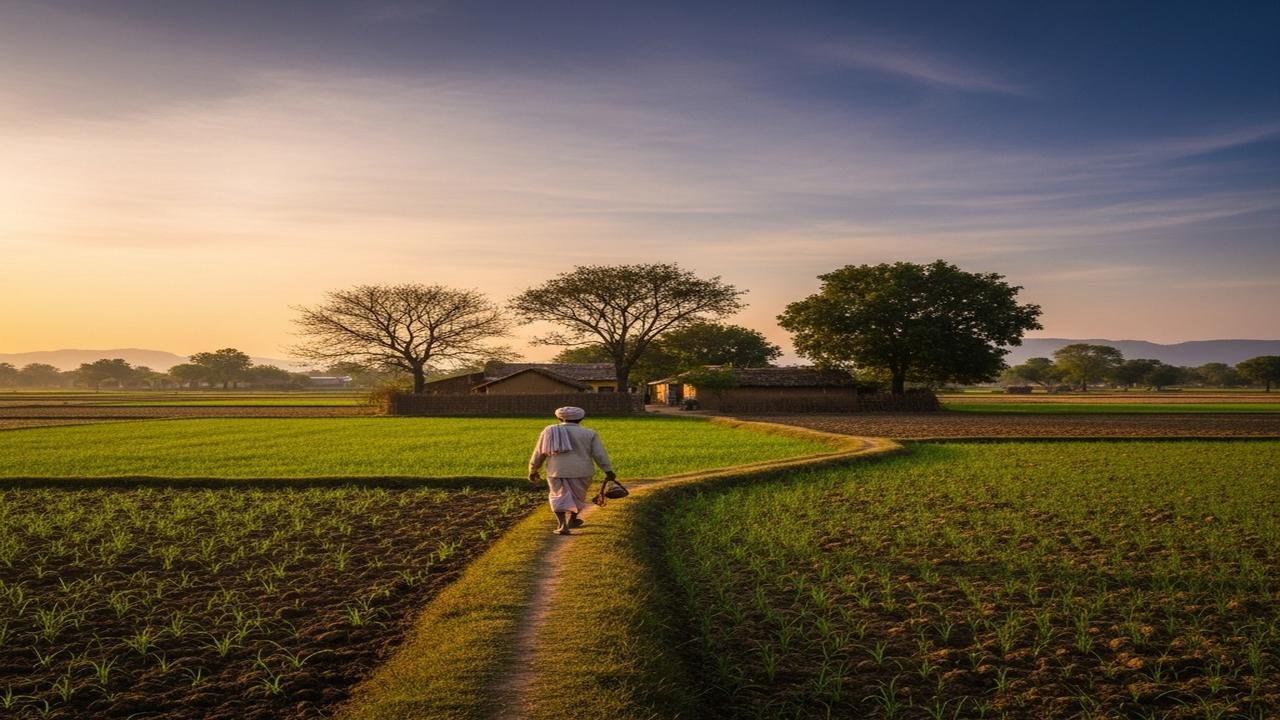Karma Bhoomi: Bharat As A Land Of Duty In The Gita

What the phrase means
Karma bhoomi literally means “land of action” (karma — action; bhoomi — land). When applied to Bharat (also called Bharatavarsha in classical texts), it expresses an idea that has religious, moral and cultural dimensions: this land is an arena where individuals and communities are called to perform their duties — social, ritual and ethical — rather than withdraw altogether from the world. The phrase is used in different registers: scriptural, philosophical and popular.
Roots in scripture and epic memory
The notion that particular places have spiritual character is ancient in South Asia. The epics and Puranas treat Bharatavarsha as a distinctive realm of human life. The Mahābhārata frames Kurukṣetra as a field of sacred duty and battle; the Bhagavad Gītā, set on that field, becomes the locus for teaching karma-yoga — performing duty without attachment. While commentators differ on details, many read the Gītā (particularly its teachings across chapters 2–3 and beyond) as insisting that action in the world carried out rightly is itself a spiritual path.
Parallel currents — Śaiva, Vaiṣṇava, Śākta and Smārta traditions — also weave place and practice. Kashi (Varanasi) is famously called a moksha-bhoomi (land of liberation) in many texts, while other pilgrimage circuits underline that living and acting in the world, through rites and service, is central to religious life. Thus the idea of Bharat as a setting for duty and devotion has multiple textual and popular strands behind it.
Different textual emphases
- Gītā and Vedantic readings: The Gītā frames action performed without selfish attachment as the proper way to live. Vedantic schools disagree on metaphysics, but many accept that action is required until liberation is attained.
- Bhakti traditions: Vaiṣṇava and Śaiva bhakti literature often speaks of devotion expressed through concrete deeds — temple service, pilgrimage, singing, feeding the poor — as transformative action.
- Puranic geography: The Puranas map sacred rivers, tirthas (crossing places), and cities across Bharatavarsha, showing a landscape shaped by ongoing ritual and moral activity.
Why people call Bharat a “karma bhoomi” today
Beyond scriptural echoes, several practical and cultural features help explain the label:
- Dense ritual geography: The sheer number of temples, festivals, rivers and tirthas means continuous public ritual and individual devotion. Rituals are acts — social, economic and religious — that keep communities engaged.
- Social duty and household life: Traditional Hindu frameworks often prioritise life-stages (ashramas) and duties (dharma — ethical duty), which locate spiritual work inside family and society rather than only in renunciation.
- Ethical action as spiritual practice: Many Indian religious thinkers, from ancient commentators to modern reformers, have insisted that service (seva), charity, and public responsibility are integral to sadhana (spiritual practice).
- Living traditions of reform and engagement: Reform movements and leaders — across colonial and modern India — invoked duty to society and nation as a moral imperative, fusing religious language with social action.
How different schools interpret the idea
Interpretations vary and deserve careful distinction.
- Advaita (non-dual) perspective: From an Advaitic standpoint the world is ultimately not the final reality, but action continues until knowledge of Brahman dawns. Thus Bharat as karma bhoomi is the stage for necessary action en route to liberation.
- Dualist and devotional schools: For many Vaiṣṇava and Śaiva traditions, worldly action—especially devotion expressed in concrete tasks—can itself be the primary means of communion with the Divine.
- Buddhist and Jain viewpoints: Both traditions emphasise ethical conduct and right action, though with different metaphysical aims (liberation through insight, austerity, non-harm). Their monastic and laity networks also shaped the subcontinent’s moral landscape.
Practical implications in religion and public life
Calling Bharat a karma bhoomi does not mean endorsing every social practice. It highlights a cultural tendency to see life as a place for continuous duty — religious, ethical and civic. This has several consequences:
- Rituals and festivals are not only devotional but also social acts that redistribute resources, reinforce bonds and create obligations.
- Religious teachings often encourage engagement with society: feeding the hungry, caring for elders, upholding justice and hospitality are framed as spiritual duties.
- Religious leaders and reformers have historically invoked the language of duty to mobilise social change, education and anti-colonial politics.
Caveats and contemporary debates
Several caveats are important.
- The phrase itself is interpretive and not a neutral historical descriptor; it has been used differently by poets, priests, reformers and politicians.
- Not all traditions prioritise worldly action equally. Some monastic paths emphasise renunciation; others insist action is unavoidable or even desirable until final liberation.
- Social practices once justified as “duty” have been critiqued and re-evaluated in modern India for issues of justice, equality and human rights; invoking dharma and duty today often includes questions of reform.
Why the idea still matters
Calling Bharat a karma bhoomi captures a persistent cultural motif: spiritual life here has typically been lived through action — ritual, service, moral responsibility — not only through withdrawal. Whether in the Gītā’s counsel to Arjuna on the battlefield, the ceaseless flow of pilgrims to sacred rivers, or the social service ethos of many religious movements, the emphasis has been on life as obligation and possibility.
Note: Many devotional and ascetic practices (fasting, intense breathwork, prolonged austerities) can affect health. If you consider such practices, consult appropriate religious guides and medical professionals where needed.
